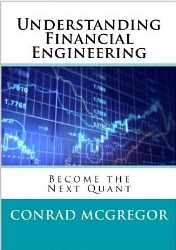All endeavors to maintain asset prices above fundamental valuations are doomed to failure.
This is a fact that never seems to be learned. Whether you look at the Tulip Mania of 1637, England’s South Sea Bubble, John Law’s Mississippi Bubble in France, the Great Crash of 1929, the Nikkei Implosion, the Nasdaq Tech Bubble, or the Housing market bubble…history has provided us with plenty of examples. Wealth cannot be created and sustained through easy money ponzi schemes. If a bubble is created it can only be truly fixed by letting it correct itself. Unfortunately we are a society entrenched in the idea that any problem can be pushed off to another day.
The basic underlying problem can be framed with a simple analogy: the typical American consumer has consumed more over the last few decades while real incomes have been stagnant be becoming burdened with debt. The reason that the American consumer was able to become indebted was because the Federal reserve kept interest rates at artificially low levels which stimulated investment in all available risky assets. If cash flows endlessly through the doors of a bank (picture the federal reserve shoveling in cash) then the bank has to do something with that cash so they lend out to all the credit-worthy clientele they can find. When they run out of the credit-worthy clientele they turn to the bad creditors and then figure out a way to repackage the toxic heap into a salable product.
The problem comes when all of this easy cash chases a certain asset. In 1637 it was tulips (I know, how ridiculous right?), in 1711 it was shares in the South Seas Company, in the 1920’s it was Florida real-estate, in 1929 in was stocks, in 1999 it was tech stocks, in 2007 it was real-estate. Once the investment is chosen the frenzy hits a Malcolm Gladwell “Tipping Point” until the last idiot puts his last dollar at the very highest price reached and then it all unravels like a deck of cards.
As a tribute to the past, I would like to share with you the books that I have found most enlightening when trying to learn from our historic mistakes:
Manias, Panics, and Crashes: A History of Financial Crises by Charles Kindleberger
The Panic of 1907: Lessons Learned from the Market’s Perfect Storm by Robert Bruner
Devil Take the Hindmost: A History of Financial Speculation by Edward Chancellor
America’s Great Depression by Murray Rothbard



